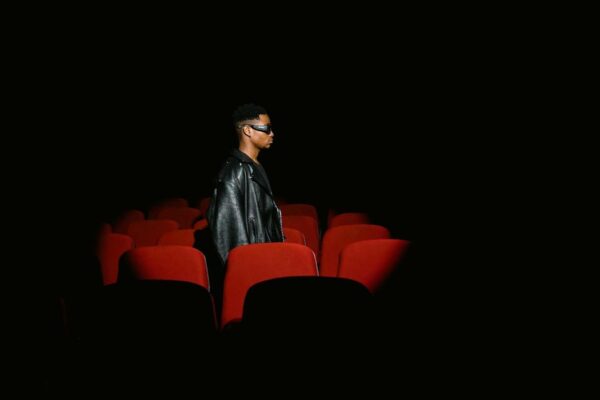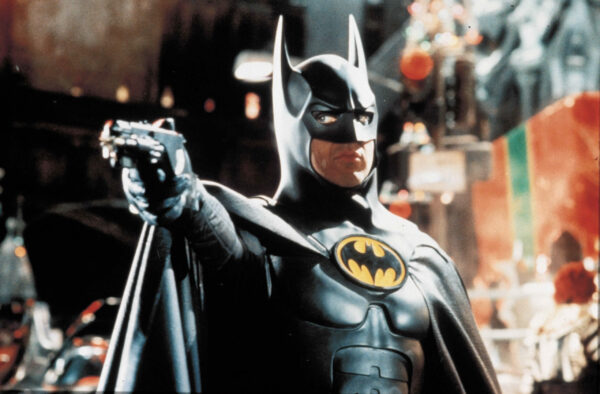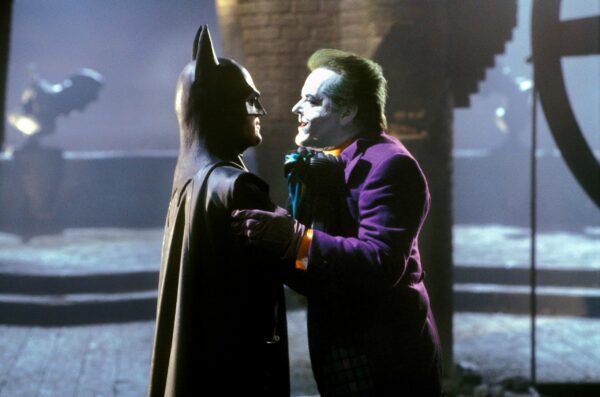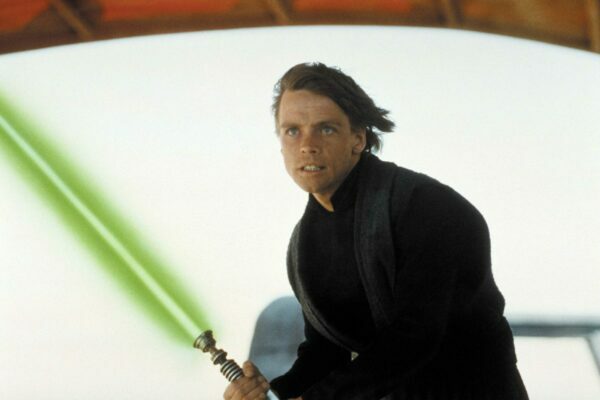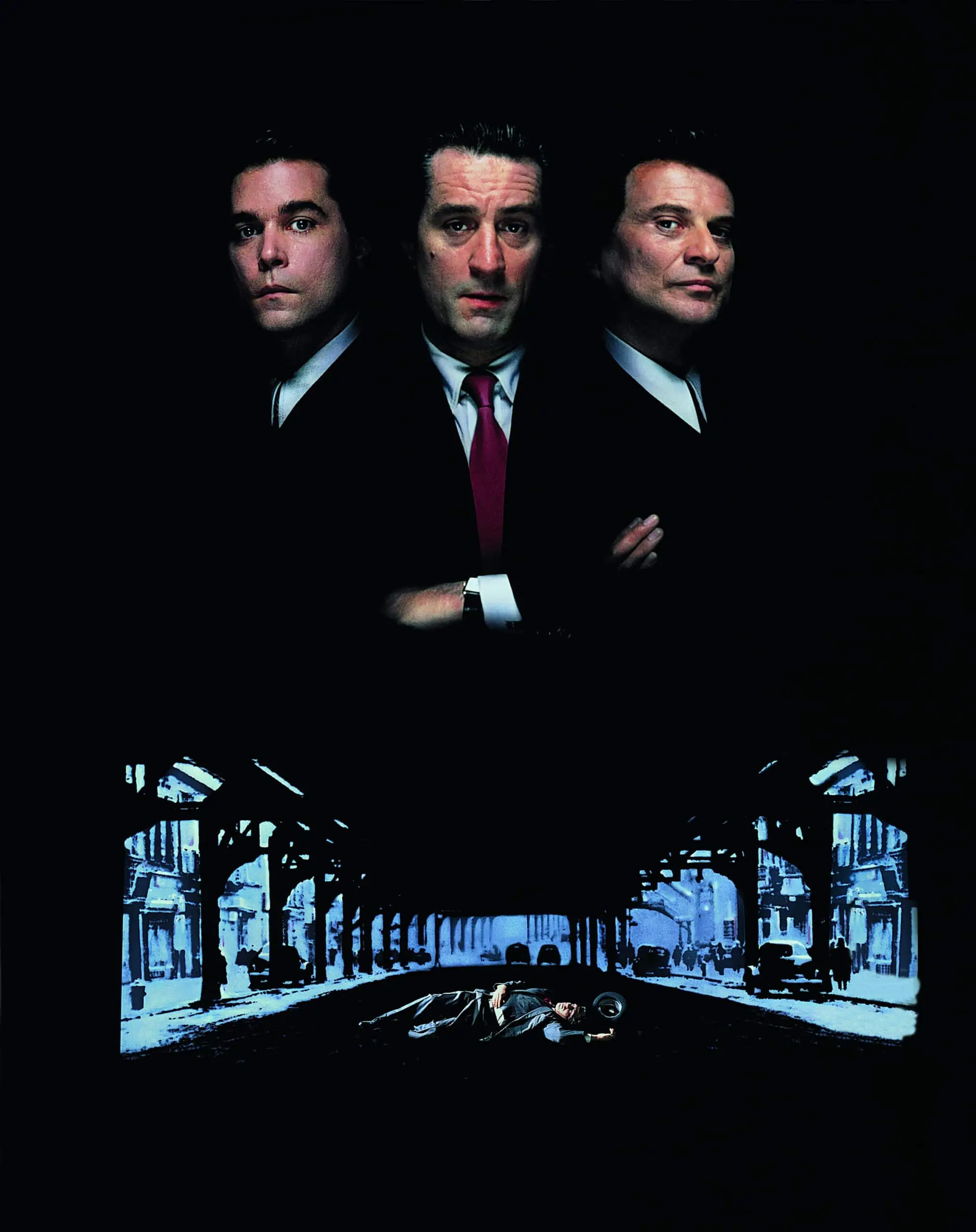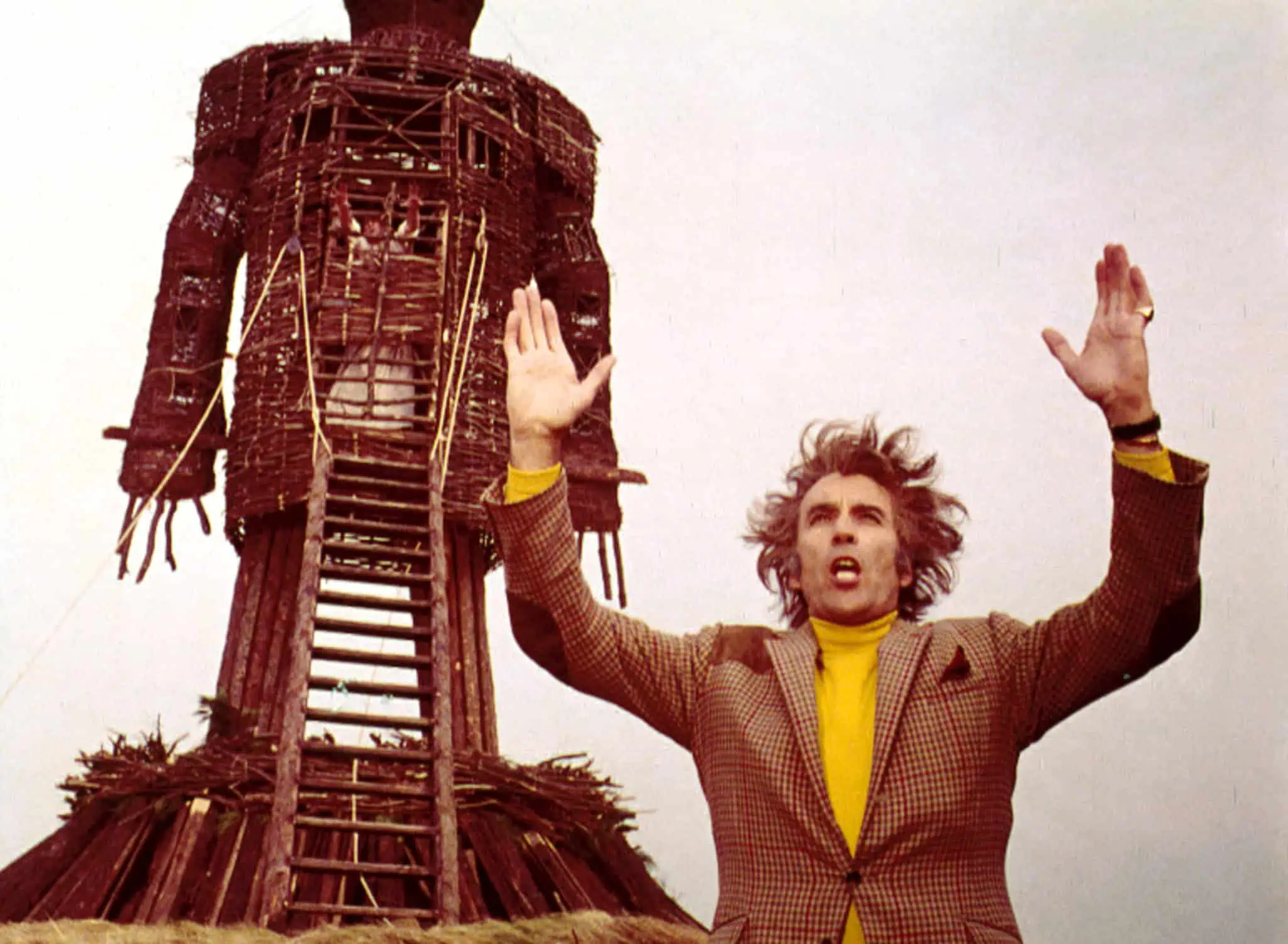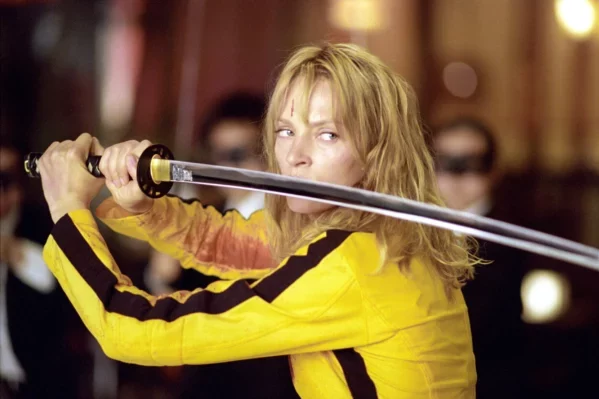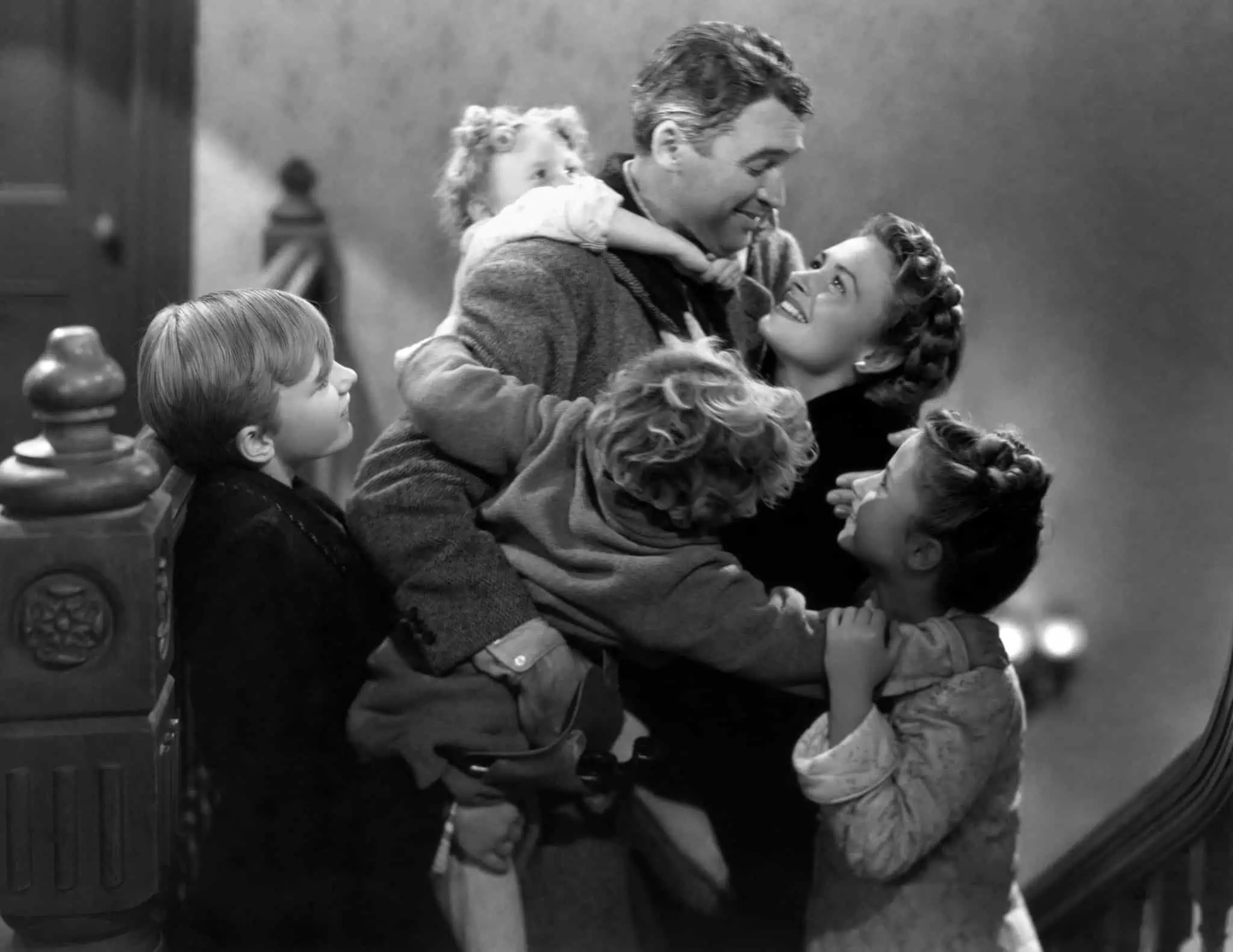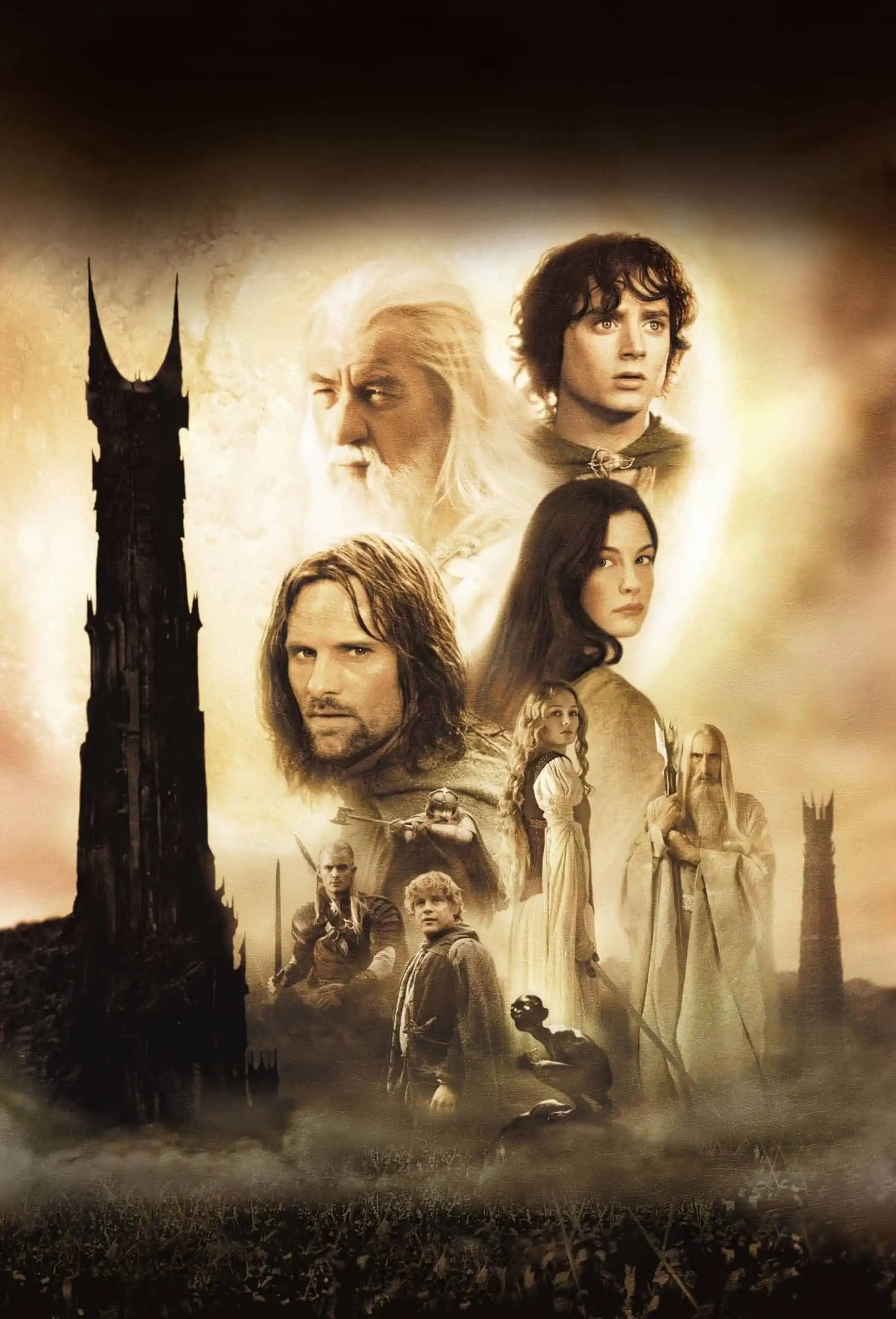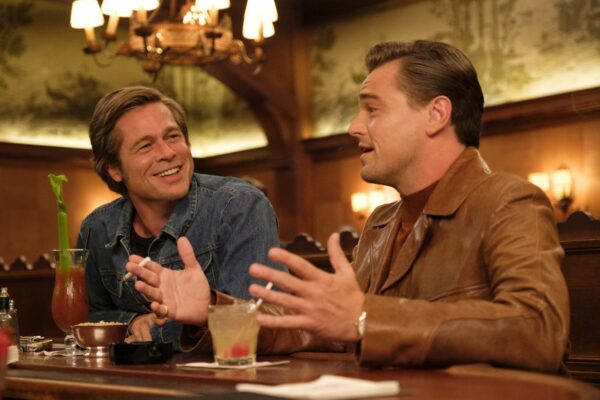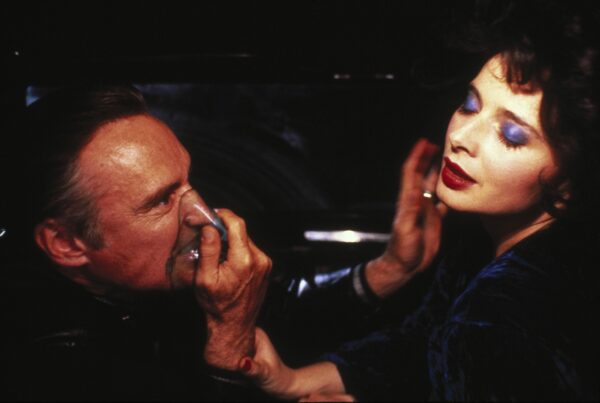
One of John Carpenter and Kurt Russell’s most acclaimed collaborations, The Thing is a science fiction/horror classic. We’re telling the making of story through 30 interesting facts.
Released on June 25th 1982, John Carpenter’s The Thing was mauled by critics and flopped at the box office. Growing in popularity over time, however, the film became a cult classic and is now regarded as an out and out classic. With a big ensemble cast, it tells the story of an Antarctic research station, and their deadly run in with a shape-shifting, assimilating extra-terrestrial.
We have the story behind the scenes on Carpenter’s classic, told by way of 30 fascinating, fun facts about The Thing.
1. The film is a remake, and Carpenter nods to it immediately
The Thing is a remake of a science fiction b-movie. Years earlier, The Thing From Another World was released in 1951 and became a cult classic of its own. Carpenter loved the film as a child and nods to it immediately in his film. The opening title of The Thing is an adapted version of the title from the 1951 original.
The logo seems to burn onto the screen, and the way they achieved this was that the logo was placed behind a smoke-filled fish tank covered with a plastic bag. The bag was then ignited, creating the effect of the title burning onto the screen.
The opening title animation to The Thing
2. A spoiler is dropped in the first few minutes of the film
The film famously starts with a dog running across the snowy plains and being pursued – and shot at – by two men in a helicopter. The dog takes refuge at the American research station. At that point, we find out the pursuers are Norwegian scientists. And, if you know your Norwegian, one of the scientists lays out the entire film. In Norwegian, he says:
“Get the hell outta there. That’s not a dog, it’s some sort of thing! It’s imitating a dog, it isn’t real! GET AWAY YOU IDIOTS!!”
The sequence ends with Garry shooting the Norwegian dead, but the warning was there right from the start.
The Norwegian scientists at the start of the film
3. The opening was originally written differently
The opening sequence could have been very different, as the script was changed quite significantly.
At first, the idea was that the helicopter pilot would lose control of the chopper. The helicopter would spin uncontrollably and disappear behind a mountain and we’d hear an explosion. Then the lone survivor of the crash would appear from behind the mountain – on fire – and chase the dog into the American camp. Carpenter scrapped the whole idea because it was, in his words, “cliche after cliche.”
4. The first major effects in the film were carried out by an effects legend
The special effects supervisor on The Thing was Rob Bottin (more on him later). However, Bottin did not actually have anything to do with the first spectacular appearance of the creature – the kennel sequence when it assimilates a dog and escapes. Instead, it was overseen by industry legend Stan Winston.
Rob Bottin had just came from working on werewolf horror movie The Howling (1981) and later said on his feelings at the time: “If I have to do another stinking mechanical dog, I’ll go nuts! I didn’t care if it was mutated, I didn’t care if it was riding a skateboard. No more dogs!”
Bottin contacted Stan Winston and he – and his team – came on board to help out. The dog used in the sequence was essentially a puppet that one of Winston’s team operated. And the moments where the tentacles shoot out of the Thing and wrap round the other dogs was carried out with reverse photography. So, when it was shot, the puppeteer pulled the tentacles back into The Thing, then this was reversed for the film so it looks like they’re shooting outwards instead.
The dog kennel sequence in the film
5. Carpenter kept the mystery as long as possible
Throughout the film, there are times when we know who The Thing is, and when the assimilation took place, and other times we don’t. This mystery was created intentionally by Carpenter, and is something he set up early on.
There’s a moment before the kennel sequence where we see the dog walk down a corridor and wander into somebody’s room. This, we assume, is how the scientists become infected. We can’t tell whose room it is because we only see the silhouette of the person on the wall. And to keep their identity hidden as to which character it was, Carpenter used an extra to cast the shadow.
The mysterious shadow cast on the wall
6. The Thing wasn’t real, but the dog barks were
In the kennel sequence, The Thing is trapped with several dogs who seem to be sleeping and resting. When it reveals itself, however, the dogs start barking and yelping in distress. In order to get the sound of the dogs barking frantically, the sound designer – Colin Mouat – rounded up many stray dogs and placed them in his house. He then dressed in a trench coat and walked round the outside of the house tapping on the windows to frighten them.
7. Carpenter wasn’t first choice as director
The producers of The Thing were Lawrence Turman and David Foster, and their first choice as director was John Carpenter. The studio – Universal Pictures – said no, though, as they already had Tobe Hooper under contract so wanted him. Tobe Hooper had directed The Texas Chainsaw Massacre in 1974, so had previous success in horror.
Hooper submitted two drafts of a screenplay, and the studio didn’t like either of them, so they reconsidered and went with Carpenter.

Tobe Hooper with Steven Spielberg on the set of Poltergeist (1982)
8. The dog was played by a trained animal actor
The dog (who is The Thing) through the first portion of the movie was played by a Wolfdog called Jed. Born in 1977, The Thing was Jed’s first movie, and he went on to appear in White Fang (1991), White Fang 2: Myth of the White Wolf (1994), and The Journey of Natty Gann (1985). Jed passed away in 1995, and has since (with his trainer) received praise for his thousand yard stare as The Thing.
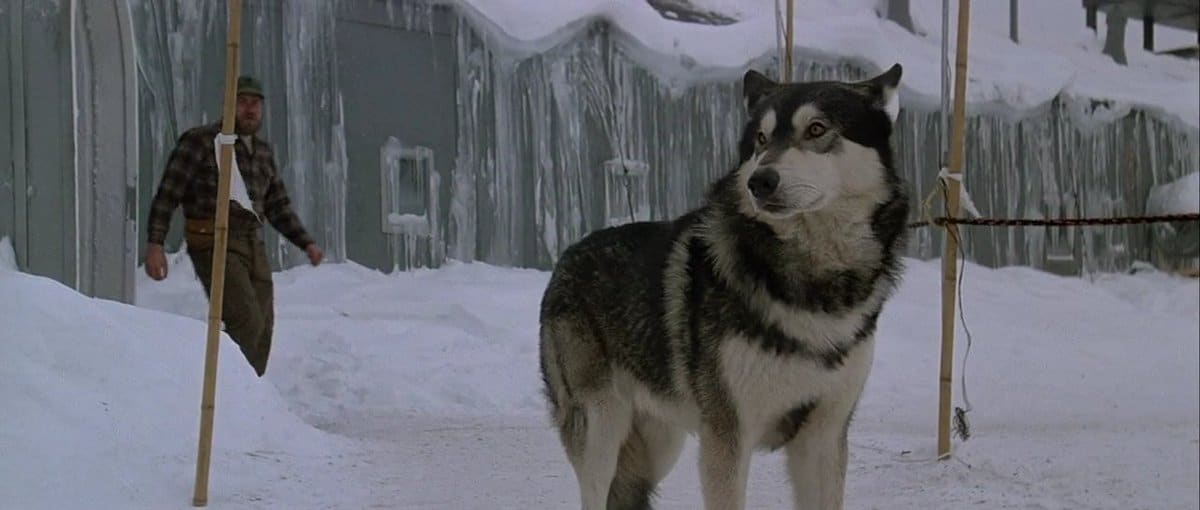
Jed in The Thing
9. Hooper’s version of the script was very different
Tobe Hooper’s script was very different to what we eventually saw on the screen in Carpenter’s film. Some of the main differences were:
- The alien in Hooper’s version did not shapeshift or assimilate hosts. It just ate them.
- The main character was called The Captain and the film was about his obsessive mission to find and kill The Thing. Which sounds very Captain Ahab/Moby Dick.
- And tonally, Hooper wanted him film to be a horror-comedy with lots of slapstick humour. Apparently, there was a scene where a character gets caught by The Thing after literally slipping on a banana skin.
Lawrence Turman, the producer, said: “It would have been one of the worst movies ever made.”
10. The cast were all big fans of Carpenter
John Carpenter has a reputation for working well with actors, and the cast on The Thing back that up. Kurt Russell and Carpenter would become long-term collaborators on further movies, as well as big friends. However, one of the stories from the set of The Thing that best illustrates Carpenter’s people management skills comes from David Clennon, who played Palmer in the movie.
Clennon said that himself Richard Masur (Clark), and Thomas Waites (Windows) had an idea about doing a scene where Palmer and Windows would conspire against the other scientists. Carpenter didn’t like the idea, so said no, and the three actors went into another room and began cursing Carpenter. Unbeknownst to them, however, their mics were still on and he could hear them. David Clennon said: “John was great about it. He came in and said. I heard what you said guys, and my reasons for not wanting to do the scene still stand. You’re right, though. I am a prick.”

John Carpenter with the cast and crew of The Thing
11. Kurt Russell brought a lot to the role
The protagonist of the film turns out to be R.J. MacReady, played by Kurt Russell, and MacReady is the one left to take on the creature in a one-on-one showdown in the climax.
The film catapulted Russell’s career as a leading man, and he added some small, interesting elements to the character. Russell would take a drag on a cigarette just before John Carpenter shouted ‘Action’ in certain scenes to make his breath more visible in the Antarctic conditions. And in the scene where MacReady and Copper visit the Norwegian camp, when the helicopter took off, the pilot turned the controls over to Russell for a little bit. If you watch carefully, in the film you can see the helicopter wobble a bit when Russell takes the controls.
MacReady/Russell takes the helicopter controls
12. Other stars were up for the part of MacReady
Kurt Russell wasn’t quite A-list at this point so wasn’t a shoo-in for the role of MacReady, and some other big acting names were considered.
The screenwriter, Bill Lancaster, actually wrote the script thinking of Harrison Ford and Clint Eastwood playing MacReady. Nick Nolte and Jeff Bridges both turned the role down, and Carpenter met with and considered Kevin Kline, but the studio felt he didn’t have enough star power. Alec Baldwin also auditioned.
After all of that, Carpenter turned to his pal Kurt Russell. They’d worked together a year earlier on Escape From New York (1981) and also in Carpenter’s TV movie, Elvis (1979). Based on those performances, the studio were easily convinced to hire him as MacReady.
Kurt Russell as MacReady
13. John Carpenter’s then-wife has a small role, too
One of our introduction scenes to MacReady sees him drinking a bottle of J&B scotch while playing computer chess. The computer was actually voiced by actress Adriene Barbeau, who was John Carpenter’s wife at the time.
Adrienne Barbeau as the voice of the computer chess machine
14. MacReady had an unseen backstory
We don’t get the details in the film, but there was a back story written for MacReady that we see alluded to on the screen.
The idea was that MacReady was a former Vietnam helicopter pilot who was involved in a tragedy during the war, which had left him ashamed and disgraced by whatever happened. Because of this, MacReady suffers from PTSD. He’s also an alcoholic, and has severe insomnia. It’s not specifically mentioned in the film, but this explains the drinking scotch from the bottle, why he’s not phased by the over the top violence, and adds some substance to the “I’m a real light sleeper, Childs” line.
15. One of the actors came up with their own character name
Thomas G. Waites plays Windows, the station’s radio operator who meets an unfortunate end at the hands of The Thing. Partially assimilated by the creature, Windows is finished off when MacReady torches him with his flamethrower.
The character is called Windows because he wears a pair of sunglasses pretty much permanently, but it was Waites who came up with the name. Waites showed up during rehearsals wearing the glasses and said, “I want everyone to call me Windows from now on”. Carpenter agreed, and they changed the name.
Windows is assimilated
16. The film wasn’t shot in Antarctica
The film is set in the South Pole, but was actually filmed in Los Angeles and British Columbia. Therefore, in order to create the illusion of below freezing conditions, the sets and stages were refrigerated down to 4 degrees Celsius, when it was really about 40 degrees outside. So any shots when we can see the actors’ breaths on the screen – that is real.

On the set of The Thing
17. One scene was added during production
One of the most memorable scenes in the film is the gruesome moment that Windows comes across Bennings, who is in the middle of being assimilated by The Thing. The interesting thing is that this scene wasn’t originally in the script. Initially, Bennings would just vanish so we could assume The Thing got to him at some point. And it was the film’s editor – Todd Ramsay – who was the reason the scene was added. To make sure Ramsay understood the film well enough to edit it, Carpenter asked Ramsay to explain the pathology of The Thing to him. Ramsay did, but he got it wrong. So Carpenter added in the Bennings scene to make it clear how The Thing absorbs a lifeform and replicates it.
Bennings is assimilated by The Thing
18. Amputees stood in for some of the cast
Of the many unforgettable scenes in The Thing, one of the most talked about is the defibrillator sequence. Copper tries to restart Norris’ heart as he lies on a medical table. As he does, Norris’ reveals himself as The Thing and bites Cooper’s arms off at the elbow. The way they achieved this was to have a real-life amputee wear a mask of Richard Dysart (who played Copper) standing in for him. They bloodied up his amputated arms, and that’s how he appears in the film.
The defibrillator scene
19. Rob Bottin had a very tough time making the film
The extraordinary special effects were orchestrated by an eccentric effects expert called Rob Bottin. Just 23-years-old at the time, he was responsible for all practical effects scenes where we see The Thing in all its glory. (Except the dog kennel scene, as discussed earlier).
Perhaps unsurprisingly, Rob Bottin had a stressful time making the film, and he had it especially difficult in preparing the defibrillator scene.
Bottin and his team had used flammable materials when they made the Norris head and neck model that detaches from Norris’ body. During the shoot, Carpenter decided he wanted real flames round the scene for continuity. As a result, the entire model Bottin had built caught fire and was destroyed. It took 4 months to build the first one, and they had to build a replacement within a week, which they somehow did.
Bottin later said he barely stopped working during filming which, over time, took its toll. As production went on, the stresses of schedules and deadlines meant he moved into the studio and was working 22 hour days at one point. Unsurprisingly, Bottin became ill and hospitalised with severe exhaustion, double pneumonia and a bleeding ulcer. He also suffered from nightmares of the creatures he was creating.

Rob Bottin and The Thing
20. The movie was a product of its time
The screenplay for The Thing was written by Bill Lancaster, the son of Burt Lancaster, a huge Hollywood star in the 1950s. To this point, Bill had just two screenwriting credits, which were The Bad News Bears (1976) and The Bad News Bears Go To Japan (1978). They were family-friendly movies but, in writing The Thing, Lancaster explored some pertinent and mature themes from the time.
This was the early 1980s, of course, when the AIDS epidemic was all over the news. So the idea of not being able to tell who is infected just by sight, only blood tests can reveal it, is said to be inspired by the epidemic. It’s also been said that the narrative of The Thing reflects communism, McCarthyism and the cold war. The idea that anybody, at any time, can become the enemy – an enemy within.
21. The film is based on a novella
Lancaster had two sources for inspiration in writing the movie. The B-Movie The Thing From Another World from 1951 mentioned earlier, and also the novel on which both movies are based. That’s ‘Who Goes There?’ – a 1938 novella written by John W Campbell Jr.
John Carpenter’s The Thing is actually a much more faithful adaptation of Who Goes There? than The Thing From Another World movie was, but there are still differences between Carpenter’s movie and the novella.
- The Norwegian scientists and crew aren’t in the book. So the opening scene is different. And there is no sequence where MacReady visits their camp.
- The book features 37 American scientists, which Lancaster reduced to 12.
- And in the book, the blood test is the climax of the story, rather than the end of the second act.

Who Goes There? – the novella The Thing is based on
22. The composer was an industry legend
The music for The Thing was composed by Ennio Morricone. A legend in film composition for his collaboration with Spaghetti Western director Sergio Leone, Morricone composed iconic scores such as The Good, The Bad and The Ugly (1966), Once Upon A Time In The West (1968), Once Upon A Time In America (1984), The Mission (1986), and The Untouchables (1987). Carpenter’s first choice of composer wasn’t Morricone, however, it was actually Jerry Goldsmith.
Goldsmith, coming on the back of a working experience he did not enjoy on Ridley Scott’s Alien (1979), passed on The Thing. The studio then suggested Morricone. Carpenter flew to Rome to meet the legendary composer. Morricone said that Carpenter only spent an hour with him. He said: “He listened to a few pieces I’d written for the film, said ‘less notes’ then left.”
Ennio Morricone’s main theme for The Thing
23. Kurt Russell had a fake hand
And the moment MacReady puts the heated wire into Palmer’s blood and it jumps – Carpenter handles that brilliantly. Have you noticed what he does with Kurt Russell’s hand?
One of the most popular – and acclaimed – scenes in Carpenter’s career is the blood test sequence in The Thing. Wanting to check everybody is who they say they are, MacReady ties his fellow scientists to a couch and tests their blood, one by one. In the middle of the test, The Thing reveals itself by leaping out of one of the blood samples.
The effects device that they used to create the ‘jumping blood’ was one long piece that included a fake hand, and they pushed the creature blood sample strand up through that. So between shots we cut from Kurt Russell’s hand holding the sample to the fake hand. However, Carpenter cuts to it 2 shots before the alien’s blood jumps out so we become accustomed to the fake hand.
The blood test scene in The Thing
24. Russell was a bit of a practical joker on the set
There’s a funny story about the shooting of the blood test. At the end of the scene, MacReady lets loose with the flamethrower to kill the Palmer Thing, and Windows who’s just been infected. The next day, Kurt Russell came to the set with his face and head covered in bandages and said to Carpenter, “I’ve been burned, man. I can’t finish the scene. I’ve been burned.” Carpenter was distraught but Russell then whipped off the bandages and said “aaaaaaahhh” – he was totally fine, of course.
25. Carpenter wanted to use stop motion animation
The climax of the film sees MacReady take on the creature in a final showdown. Again, the practical effects work is astonishing. It took a team of 50 technicians to operate the animatronic puppet of The Thing that was built for this sequence.
Originally, Carpenter toyed with the idea of using stop motion animation to show The Thing emerging from the ground in this sequence. Carpenter had some stop motion tests created, and decided against using it too extensively.
The stop motion animation tests for The Thing
26. The climax resulted in some safety issues
At the climax, MacReady (supposedly) kills the creature by blowing it up with dynamite, triggering a series of huge explosions in the station. The explosions in this sequence were set off for real and in the moment where MacReady throws the dynamite, it created a much bigger explosion than Kurt Russell was expecting. If you watch the film closely, you can see Russell off to the side, shielding himself from the blast. Safety consultants were present on the set who told Carpenter how big the explosions could be. But they warned him, they may not be big enough to bring down the set. If they weren’t, Carpenter didn’t have a back up plan. In his words: “Fortunately, the explosions covered and everything and all the hard work of the production team was completely destroyed.”
The explosive climax to the film
27. The end was originally more gory
At the end of the film, Nauls disappears, leaving us to assume he’s been taken by The Thing. Originally, however, we were meant to see his Nauls’ death. A much longer version of the finale was planned, with Nauls appearing out of a crack in the floor. He’d be screaming at MacReady for help while being assimilated by The Thing. Tentacles would erupt from his body, and a large tentacle would rip through his chest, killing him. Unfortunately, they didn’t have time to finish all of the effects for the scene. And, when a test audience laughed at the scene, Carpenter cut it out.
28. The end of the film has been theorised over
The Thing ends after shortly after the explosions and the station has been destroyed. MacReady and Childs (Keith David) are the lone survivors. Still unsure of each other, they sit among the debris and the film finishes with MacReady’s famous line, “Let’s wait here a while. See what happens.”
One of the most talked about ambiguous endings in movies, this final scene has been theorised over for decades. We have the main ones here.
- In Bill Lancaster’s original screenplay, he wrote two endings. One ended with both MacReady and Childs turning into The Thing in front of each other. The other ended with MacReady and Childs being picked up by rescue helicopter and MacReady saying, “which way to a hot meal?” The insinuation in this second ending was that neither was The Thing. Carpenter wanted an ambiguous ending, however, and it was actually Kurt Russell who came up with the idea of the two men staring each other down.
- There was another ending that was shot by Carpenter but not used. In this ending, it was revealed that MacReady survived, and picked up by the rescue team, while Childs froze to death. MacReady then passed a blood test, confirming he was not The Thing.
- Perhaps the most popular theory revolves around the bottle of scotch MacReady hands Childs at the end. MacReady has been throwing Molotov Cocktails at The Thing earlier, and it’s said that this bottle is filled with gasoline, not scotch. Childs drinks it and, because he’s The Thing, doesn’t know the difference.
And, at a horror convention in 2008, Keith David was asked if he ever knew who, at the end, was The Thing. He said, “Well, I don’t know about Kurt, but it sure as hell wasn’t me.”
The famous final scene in The Thing
29. The film was a major flop on release
Despite being regarded today as a science fiction/horror classic, The Thing was a huge flop on its release in 1982. On a production budget of $15m, The Thing grossed just $19.6m. Critics didn’t like the movie very much either:
Roger gave the film 2.5 out of 4 and said:
“The Thing is a great barf-bag movie, but is it any good? No, for two reasons: the superficial characterizations and the implausible behaviour of the scientists. It’s clear that John Carpenter concentrated on the special effects and allowed the story and people to become secondary.”
Respected movie magazine Cinefantastique had The Thing on its front cover and asked: “Is this the most hated movie of all time?” Then in their review they called it, “Instant junk” and “the quintessential moron movie.”
And Starlog, maybe the biggest science fiction magazine at the time, said:
“John Carpenter was never meant to direct science fiction horror movies. He’s better suited to directing traffic accidents, train wrecks, and public floggings”.
Even the director of The Thing From Another World got in on the act. Christian Nyby said:
“If you want blood, go to the slaughterhouse. All in all, it’s a terrific commercial for J&B Scotch.”
30. Other science fiction classics were involved in the movie’s failure
Coincidentally, The Thing was released on the same day as a nother science fiction movie that grow in stature over time.
Ridley Scott’s Blade Runner was released to a critical mauling and very poor box office takings. Like The Thing, however, its reputation grew over time and, by the mid-1990s, was regarded as a classic.
The failure of The Thing at the time has been attributed in part to a huge movie released that same year. Steven Spielberg’s E.T. the Extra-Terrestrial (1982) was a cultural phenomenon and became the highest-grossing movie of all time. A family movie about a charming, friendly alien, commentators have said that audiences weren’t looking for the gruesome killer monster that Carpenter was peddling, resulting in The Thing turning audiences off.
And we’re at the end of our list – 30 huge, spectacular and fun facts about The Thing – one of the most beloved cult classics ever made. Please share on your social media platforms, and subscribe to our YouTube channel for lots of great video content.
The beginning of a beautiful friendship
Stay up-to-date with all things All The Right Movies by signing up for our e-newsletter.


